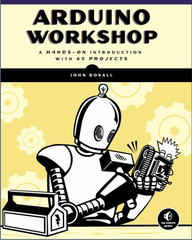Once again Damian Peckett has documented an excellent project based around an Arduino Uno or compatible board, and quite frankly this just plain awesome. Damian has managed to emulate the original Apple II computer - including video output, a cassette interface and the use of a PS/2 keyboard for input.
As with his previous Arduino Ghetto VGA system the video frame buffer is held in the secondary microcontroller, freeing up more RAM for the Apple emulator. Although this is still a work in progress, the emulator works and could be reproduced in a few hours. The following image is an example of a Mandelbrot fractal created by the emulator:

Furthermore Damian explains the workings and thought behind many of the emulator components which make interesting reading. Either way, to get started check out the emulator web page. And for more, we're on facebook, Google+, and twitter - so follow us for news and product updates as well.
If you need to add external hardware or devices to your next Arduino project, you'll need a protoshield to mount the external circuitry. In doing so, consider our range of ProtoShields. From the tiny LeoStick to the Mega we have a wide range to suit your application.






















